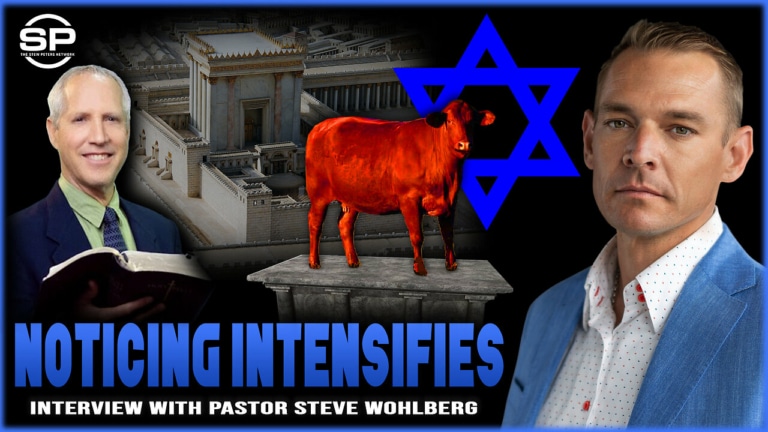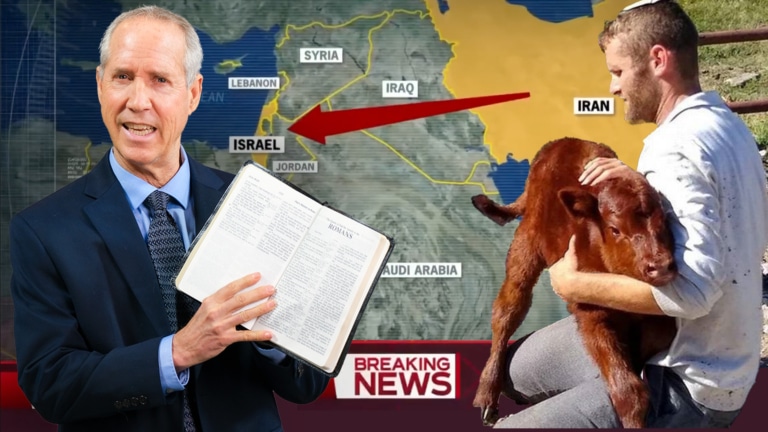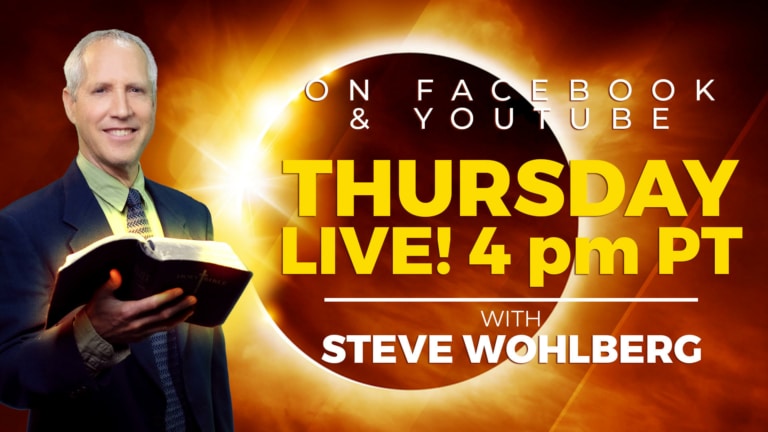The word “Futurism” may be unfamiliar to many Christians today, yet one hundred years ago it was well-known among Protestants. E.B. Elliott, in his classic commentary on the book of Revelation republished for the fifth time in 1862, called Horae Apocalyptica, gives this background and definition:
“The futurist scheme, as I have elsewhere stated, was first, or nearly first, propounded about the year 1585 by the Jesuit Ribera; as the fittest one to turn aside the Protestant application of the Apocalyptic prophecy from the Church of Rome. In England and Ireland of late years it has been brought into vogue chiefly by Mr. S.R. Maitland and Mr. Burgh; followed by the writer of four of the Oxford Tracts on Antichrist. Its general characteristic is to view the whole Apocalypse, at least after the Epistles to the Seven Churches, as a representation of the events of the consummation and second advent, all still future: the Israel depicted in it being the literal Israel; the temple, Apoc. xi., a literal rebuilt Jewish temple at Jerusalem; and the Antichrist, or Apocalyptic Beast under his last head, a personal infidel Antichrist, fated to reign and triumph over the saints for 3 1/2 years, (the days in the chronological periods being all literal days) [rather than years], until Christ’s coming shall destroy him” (Horae, Vol. 4, p. 597).
According to the Futurist viewpoint, “the whole 1800 years that have passed subsequently are to be viewed as a blank in prophecy; the period having been purposely skipped over by the Divine Spirit, in order at once to plunge the reader into the events and times of the consummation” (ibid.).
In other words, when “Futurists” look at the book of Revelation, they see little or no prophetic fulfillments during the entire course of Christian history. In it’s modern form, almost everything is predicted to be fulfilled after the Rapture, after we’re gone, with two of it’s primary characteristics being: 1) The belief in a single, future evil Antichrist person, and 2) the belief that prophecy will then center around the literal Jewish nation with it’s supposedly rebuilt temple.
Futurists often claim that Revelation 4:1 describes the Rapture and that everything beyond this will occur during a supposed 7-year tribulation. It’s modern advocates often claim that after Revelation 4, God’s Church is not on earth because it is not specifically mentioned. Thus the absence of the word “Church” is used as proof of its removal.
It is hoped that the following points will reveal the failure of Futurism:
- It doesn’t make sense that God would pass over 2000 years of Christian history in His prophecies, especially since the foundation prophecy of Daniel 2 reveals a straightforward historical succession from the days of Babylon all the way down to the end of time.
- A little historical research will reveal that the majority of Christian commentators on the book of Revelation down throughout Christian history have definitely seen the Church as being on earth from Revelation 4-20.
- Revelation 4:1 does not describe the Rapture of the Church. It simply portrays John alone being taken up to heaven in a vision. Calling this “the Rapture” is really stretching it! John did not actually go to heaven in 4:1. His toes were still on Patmos.
- Although the word “Church” is not used in Revelation 4-21, there are many prophecies and statements that clearly reveal that the Church is in fact on earth during those times.
- The White Horse of the First Seal (Revelation 6:2): Although there are differences in the application of this symbol, a very large number have taken the same view as Pareus in his commentary (published in 1615). Elliott says, “In the four first seals he [Pareus] makes the horse the Church, Christ being its rider: – first white, with reference to its primitive purity; chiefly for the first 200 or 300 years: next red, with reference to its persecutions and blood-shedding of martyrs by the Pagan emperors …” (Horae, Vol. 4, p. 474).
- The Fifth Trumpet (Revelation 9:4) does not hurt those who have “the seal of God on their foreheads.” This has often been applied to historical Christians in God’s Church.
- The Time of the Sounding of the Seventh Angel (Revelation 10:7): During this time, “the mystery of God [will] be finished.” This “mystery of God” involves the preaching of Jesus Christ by His Church (Eph. 3:9, 10; Col. 4:3) and the fullness of Christ in the hearts of His people (Col. 1:26,27).
- The Pure Woman (Revelation 12:1, 6, 13, 17): Paul describes Christ’s Church as a “chaste virgin” (2 Cor. 11:2) and as a “her” (Eph. 5:25). So does John in Revelation 19 which refers to Christ’s “saints” as “His wife” (19:7, 8).
- The Faithful and Persecuted Saints against the Beast (Revelation 13, 14): The Beast makes “war with the saints” (13:7). “Here is the patience and faith of the saints” (13:10). “Here is the patience of the saints: Here are they who keep the commandments of God and the faith of Jesus” (14:12). Who are these “saints”? Paul speaks of “all the churches of the saints” (1 Cor. 14:33). Thus wherever the saints are, there is Christ’s Church.
- The Three Angel Messengers (Revelation 14:6-12, 14): Three final messages are represented as being given by angels right before the second coming of Jesus Christ. The first angel has the “everlasting gospel” to “preach” to all the world (14:6, KJV). This doesn’t mean that literal angels will shout from the skies. Not at all. Rather, these angels represent messages being given by Christ’s Church. It is the Church that is to “preach” the gospel to all the world before the end comes. Mat. 24:14.
- The Faithful Garment-Keepers before Armageddon (Revelation 16:15, 16): Right before Armageddon, Jesus says, “Behold, I come as a thief, blessed is he that watches, and keeps his garments, lest he walk naked, and they see his shame … Armageddon.” It is faithful Christians in Christ’s Church who hold onto the garments of His righteousness before the end.
- The Martyrs (Revelation 6:9; 12:11; 17:6): Mystery Babylon is drunk with the blood of the martyrs of Jesus Christ. These martyrs are faithful Christians in God’s Church throughout history who have died for the truth of Christ.
- The Called-Out ones (Revelation 18:4): Before the final plagues fall (vs. 8), Jesus says, “Come out of her, my people …” His people are His saints in His Church who have become trapped inside of spiritual Babylon.
- The Voice of the Bride (Revelation 18:23): Jesus pleads through His bride (His Church) to His “other sheep” (John 10:16) who are yet trapped inside the deceptions of Mystery Babylon – before it’s too late.
- His Bride (Revelation 19:7, 8): Before Jesus returns, His wife makes “herself ready.” This refers to Christ’s Church.
- Martyrs who resist the Beast (Revelation 20:4): Many are killed for “their witness to Jesus and for the word of God.” During Earth’s final crisis, true Christians in Christ’s Church refuse to bow to the Beast, the Image, and the Mark – even until death.
Futurism views all of the above passages as applying only to the “tribulation saints” who are forced to face a future one-man Antichrist after the Rapture. Yet this view ignores over a thousand years of Christian history and bloodshed during which faithful martyrs in the Church of Jesus Christ stood up against the real Beast and Harlot of Babylon.
Jesus Himself said, “On this rock I will build my Church, and the gates of Hell shall not prevail against it” (Matthew 16:18). In Christian history, faithful souls have fought the Beast, Mystery Babylon, and the great Dragon himself. Yet “they overcame him by the blood of the Lamb and by the word of their testimony, and they did not love their lives to the death” (Revelation 12:11).
It’s time we realized the failure of Futurism.






